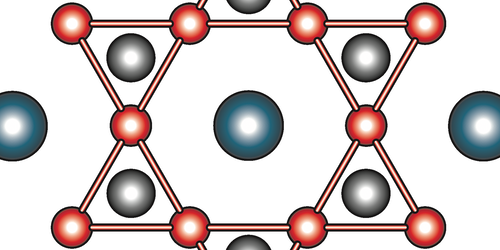Experiments Support Theory for Exotic Kagome States
One of the goals of condensed-matter physicists is to catalog and explain the wide array of electronic states that can appear in materials, improving researchers’ understanding of important phenomena such as superconductivity. In recent years, experimentalists have discovered several unexpected exotic electronic states in materials called kagome superconductors, prompting intense debate over the nature of these states. Now Ilija Zeljkovic of Boston College and his colleagues have discovered features in the band structures of these materials that point toward an explanation [1].
The kagome family of superconductors have lattices with sixfold rotational symmetry and transition at temperatures of 70–100 K to a so-called charge-density wave (CDW) state—a state with a periodically modulated charge density. Theorists have explanations for this CDW state but not for several other CDW and Cooper-pair-density wave states that have lower transition temperatures. A theory published last year proposed that small features in the materials’ Fermi surfaces known as Fermi pockets could be associated with the high-temperature CDW and could also generate the unexplained states through standard mechanisms [2]. But until now, no one had observed these features unambiguously.
Zeljkovic and his colleagues have imaged these pockets in three kagome superconductors. The researchers show that the pockets link to both the high-temperature, “parent” CDW state and to two of the lower-temperature states. These results provide the first experimental evidence supporting the theory involving Fermi pockets.
–David Ehrenstein
David Ehrenstein is a Senior Editor for Physics Magazine.
References
- H. Li et al., “Small Fermi pockets intertwined with charge stripes and pair density wave order in a kagome superconductor,” Phys. Rev. X 13, 031030 (2023).
- S. Zhou and Z. Wang, “Chern Fermi pocket, topological pair density wave, and charge-4e and charge-6e superconductivity in kagomé superconductors,” Nat. Commun. 13, 7288 (2022).




